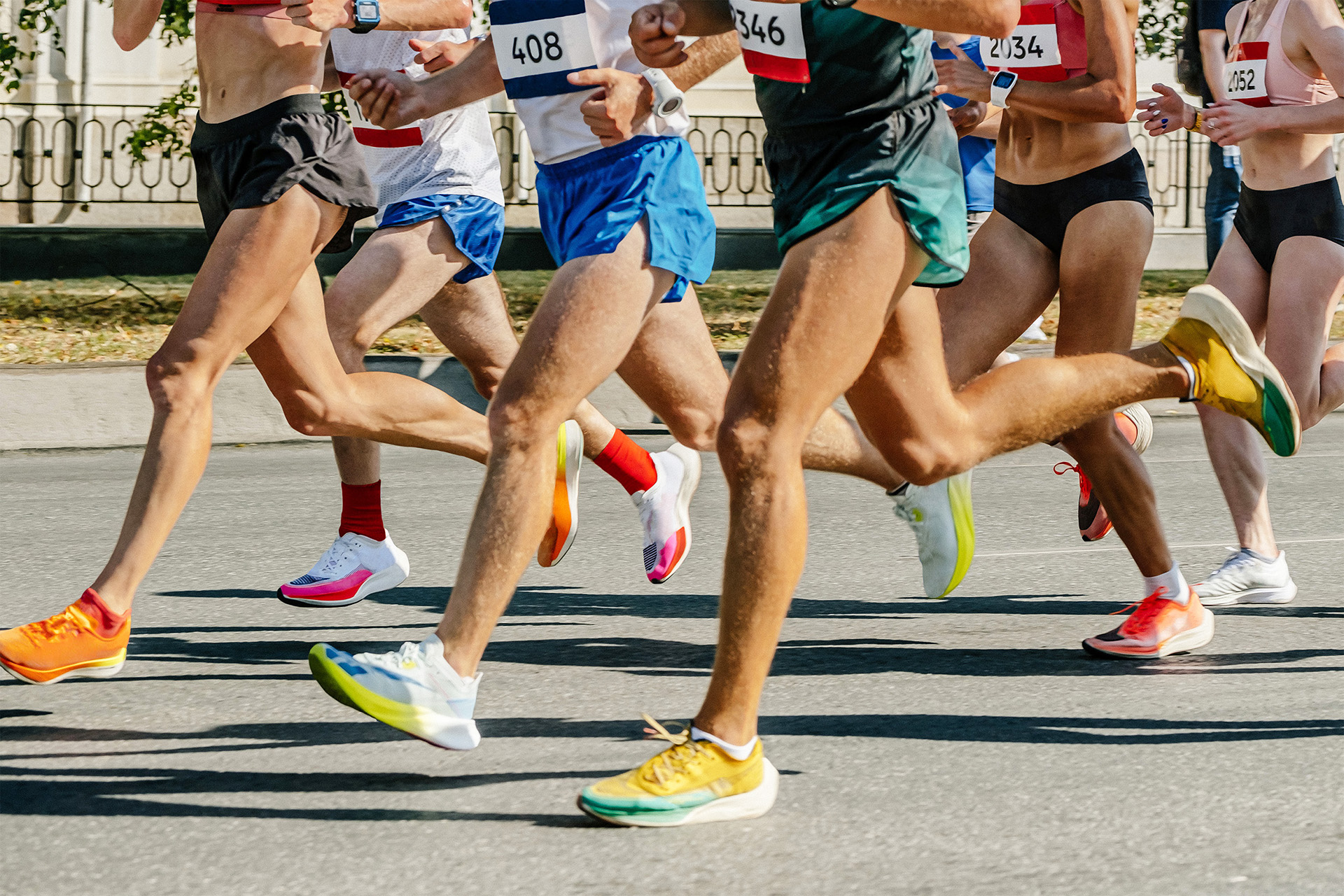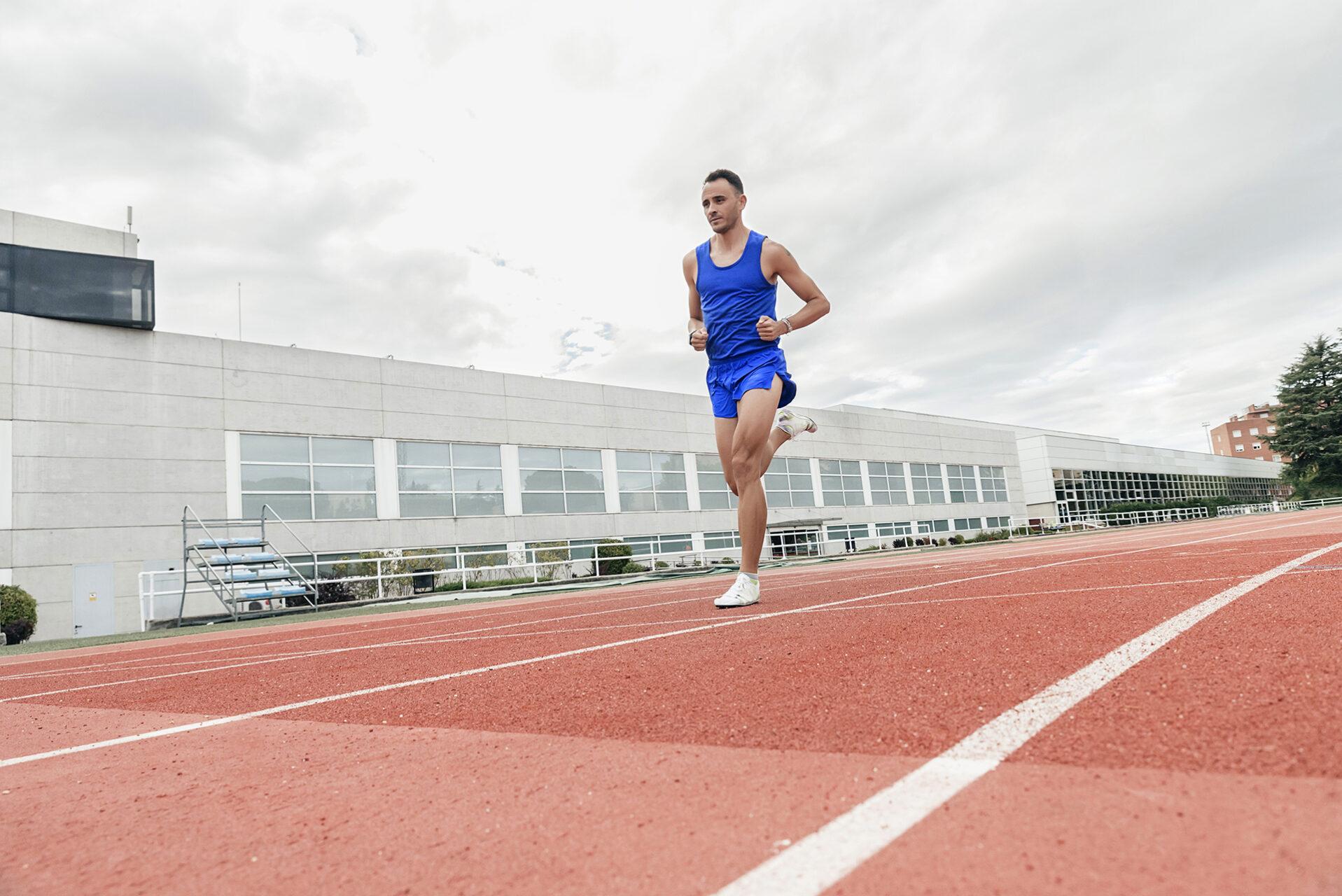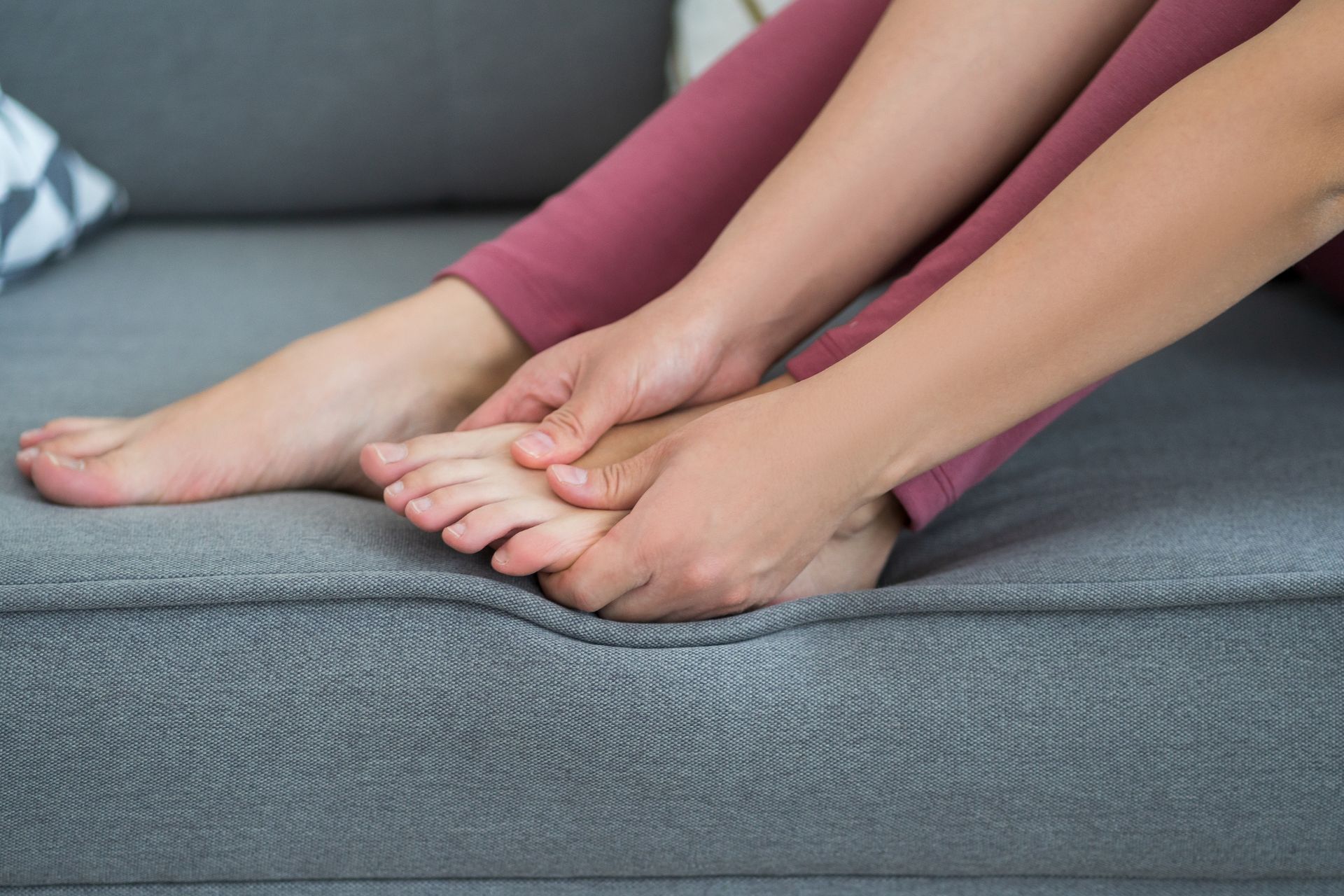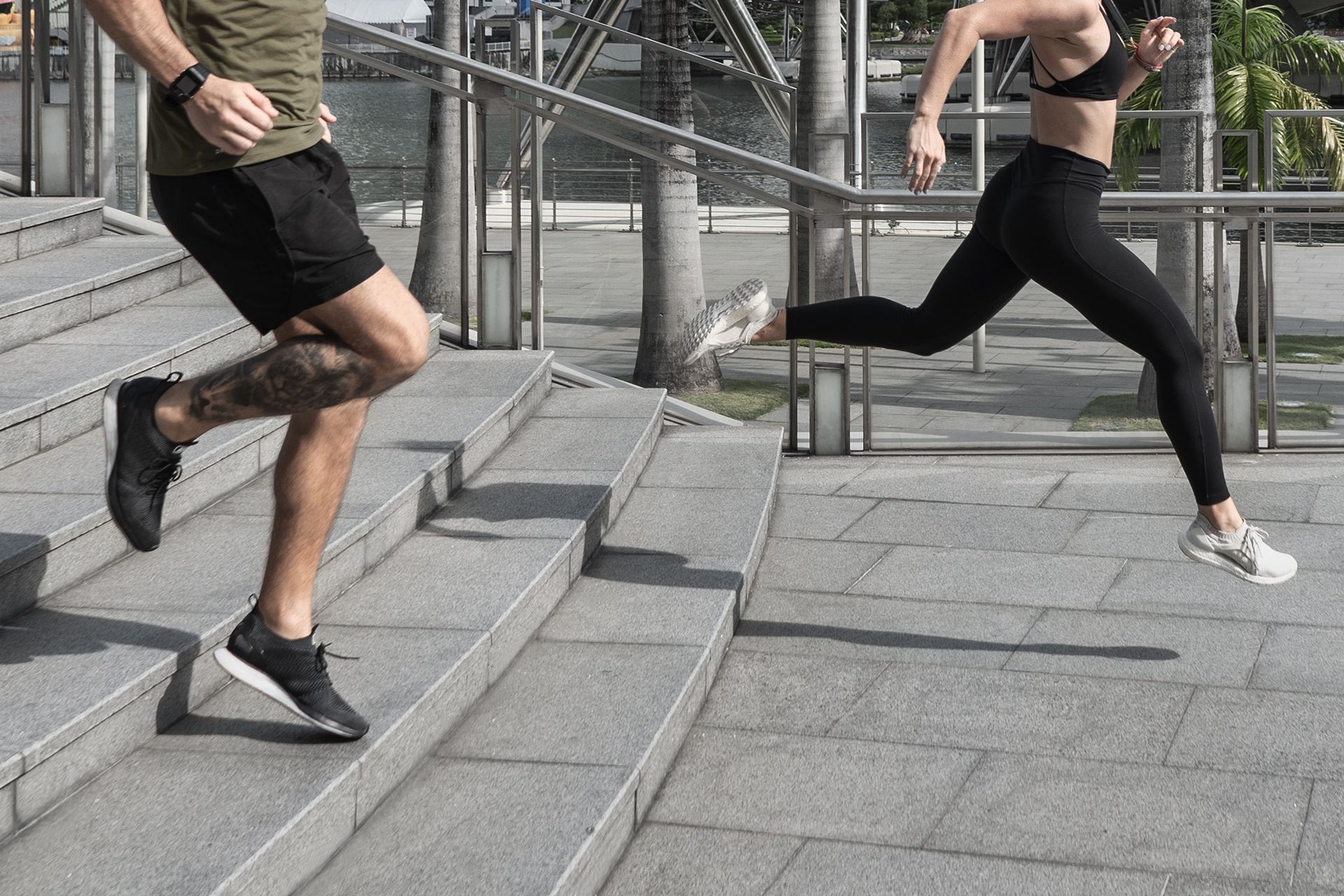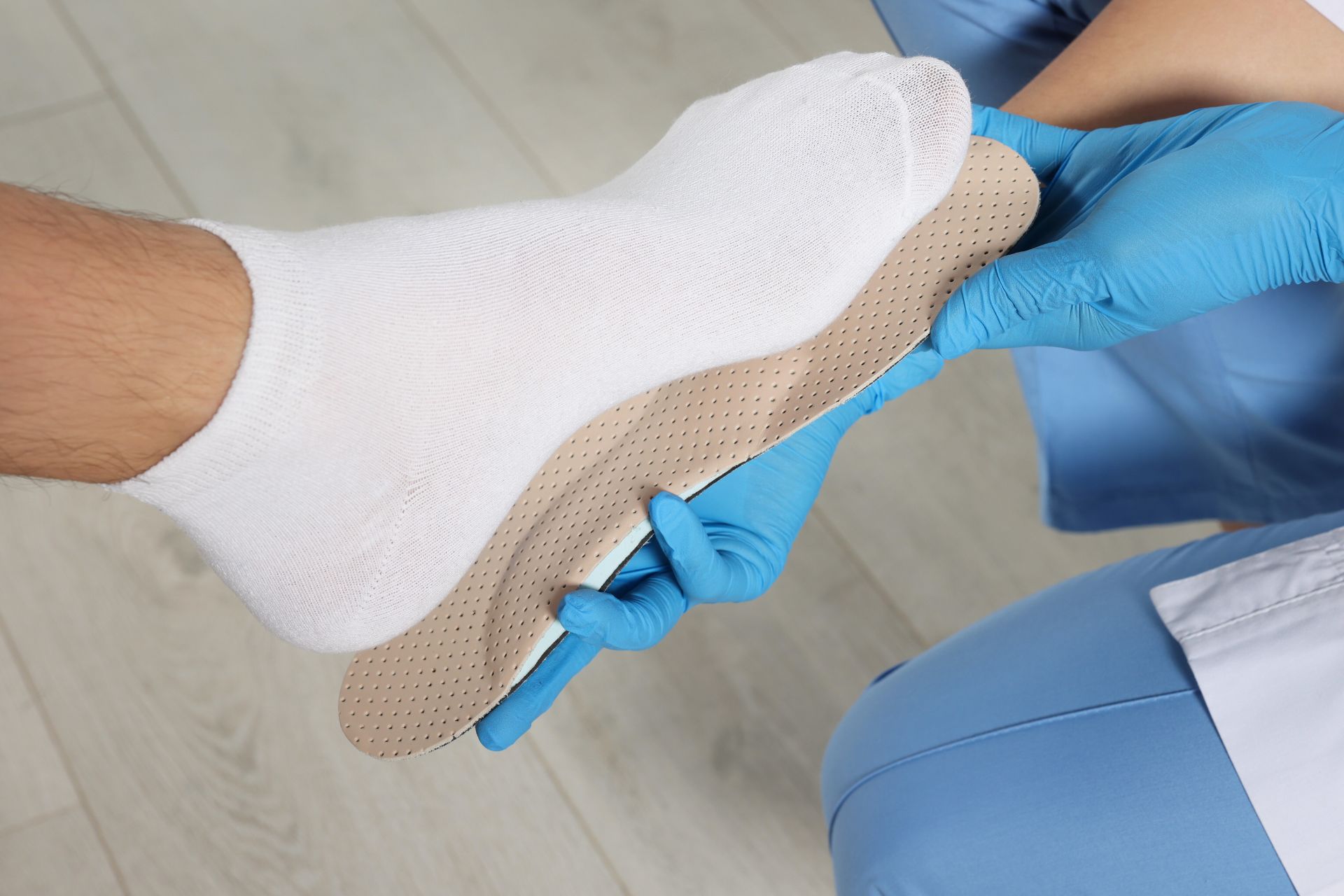Runners, lace up and get your cadence on! The path to marathon glory and trail-blazing victories hinges on the golden mantra: “Champion your feet, and they’ll champion your run”.
From the rhythm of your morning training runs to the electrifying final sprints, the running journey starts and culminates at the soles of our feet. But let’s not be deceived; it’s more intricate than dodging the dreaded blisters or snagging the newest pair of sleek runners.
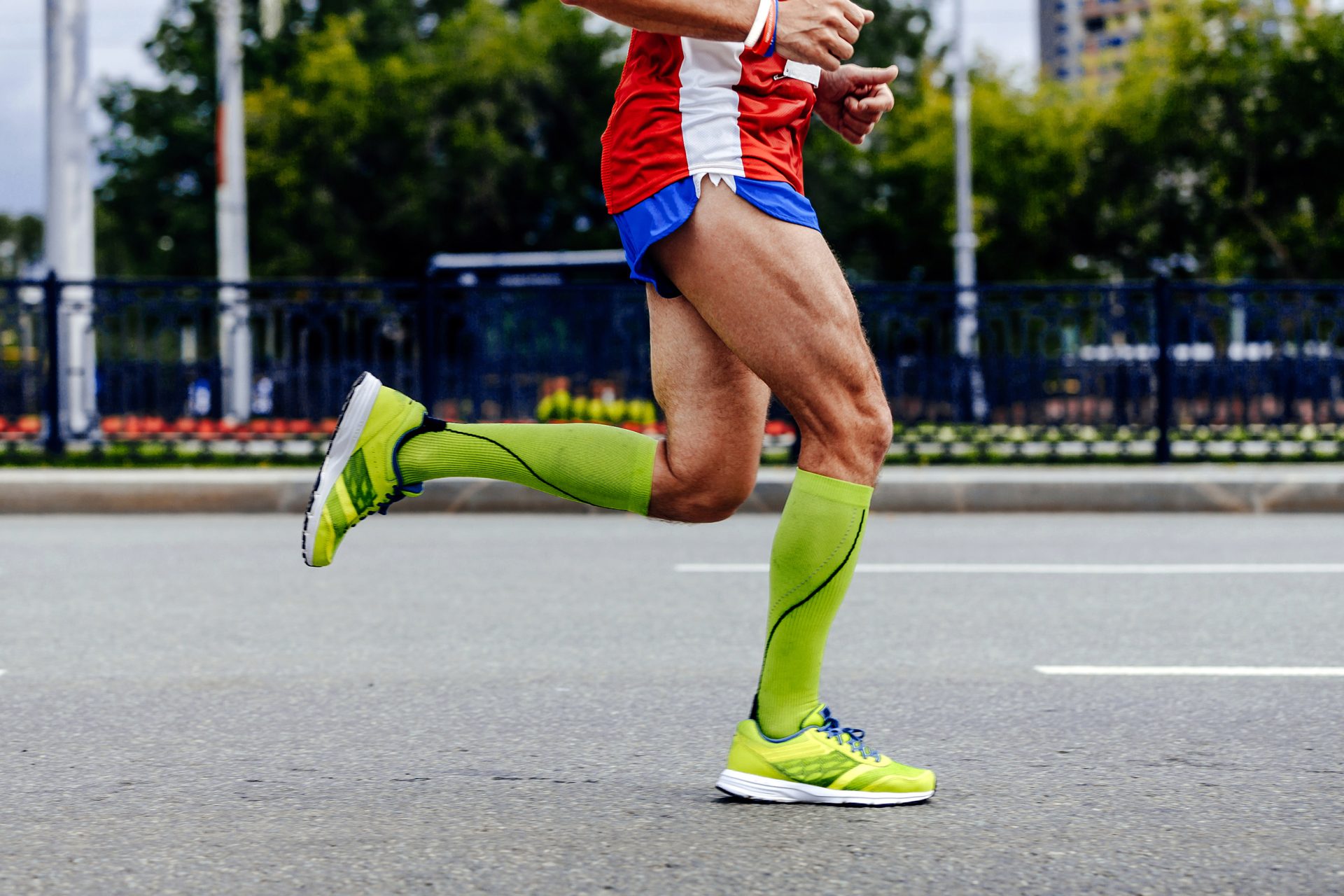
Peel back the surface, and there’s a fascinating world of biomechanics where every step intertwines muscle, bone and sheer human will. It’s in matching your unique stride to the ideal footwear, and crucially, it’s in the wisdom of preempting injuries, understanding the silent whispers of our feet before they crescendo into agonising screams of pain.
So come along, fellow runner. Join us for a marathon of knowledge as we dissect, discuss and delve into foot care’s finer points, including foot care after a marathon. Every insight gained will be one more tool in your training, ensuring that each run is not just a distance journey but also running smarter.
Know Your Natural Gait and Foot Mechanics
Runners take note: It’s more than just the distance you cover; it’s how you tread each mile. Your feet lay the groundwork for exhilarating runs and record-breaking sprints. Dive deeper, and it’s all about balance — whether veering inward with overpronation or curving outward with underpronation. The way you strike the ground dictates your injury play.
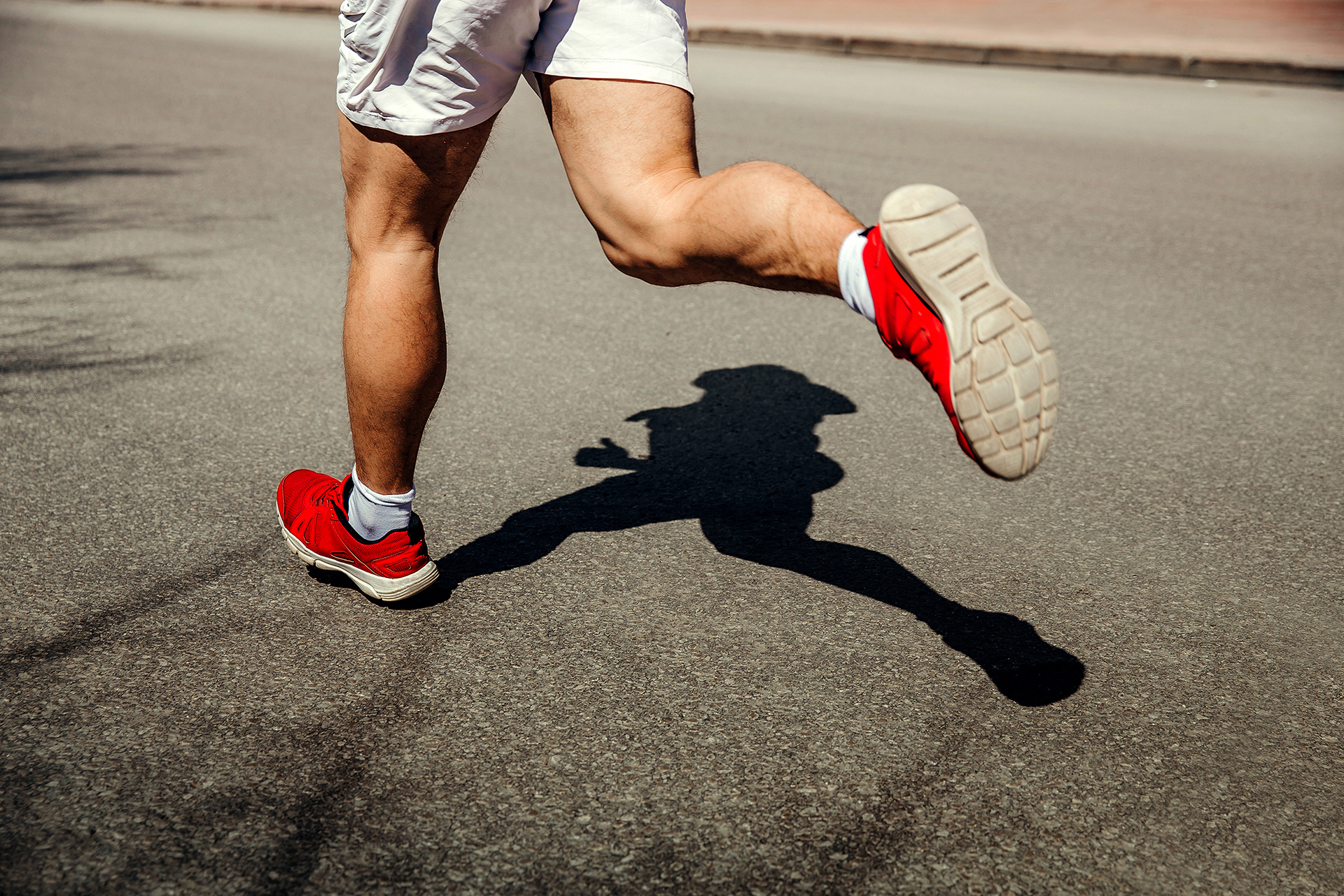
Let’s look at overpronation, where the foot’s inner arch collapses too much. It’s akin to a runner giving their inner foot too much love, creating uneven stresses. Conversely, underpronation — or ‘supination’ as the pros call it — sees your foot roll outward, placing undue stress on the outer edge. While unique, both gaits can be culprits in the dreaded injury saga. Stray too much from that balanced middle, and your body compensates in ways that could see you nursing an injury instead of celebrating a new personal best.
But here’s the kicker – it’s not a guessing game. There’s a science to every step, a rhythm to every run. You’re unlocking the secret to fewer injuries and more powerful runs by decoding your unique gait and foot mechanics. The research doesn’t lie; straying from your natural stride can be a shortcut to the sidelines. So, why leave it to chance?
Familiarise yourself with your foot’s natural balance to make way for a smoother, safer and more efficient stride.
The Right Fit Matters
Choosing the proper footwear isn’t just about style; it’s about performance and injury prevention. The science behind selecting the right shoes is undeniable. Think of your shoes as the tire treads on a race car – vital for gripping the track, manoeuvring twists and turns, and charging towards that finish line with unparalleled zeal. While a flashy new design of the season or brand might catch your eye, the true magic lies in the shoe’s soul – and sole!
Ill-fitting or inappropriate shoes can exacerbate biomechanical issues, amplifying those niggling biomechanical hitches. Imagine taking a trail with sneakers that don’t cradle your arches just right; running in shoes with insufficient arch support can increase the risk of plantar fasciitis. The repercussions? You’re flirting with the ominous plantar fasciitis inflammation that no runner wants knocking at their heels.
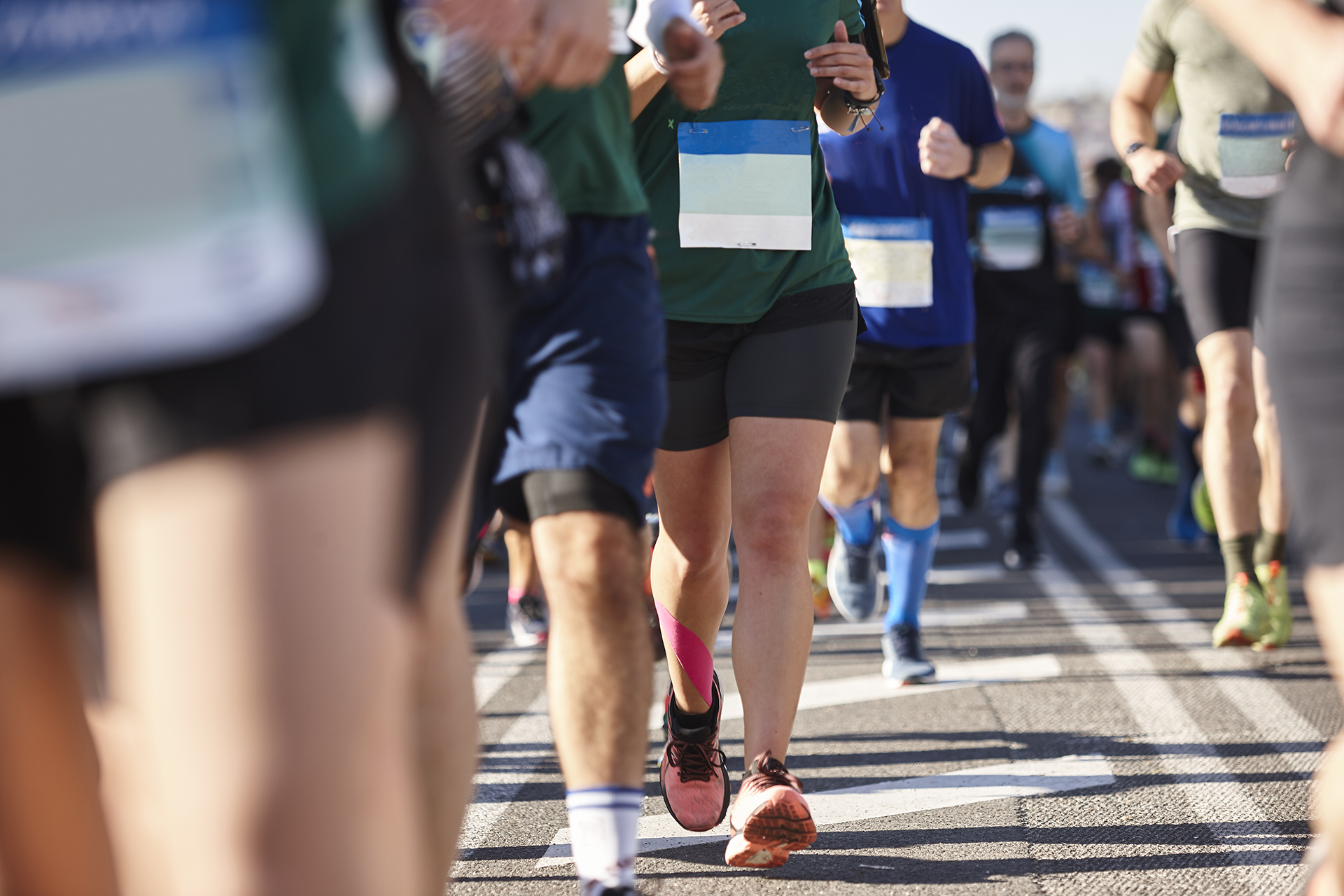
Runners, don’t be razzle-dazzled by the glossy ad campaigns of mass-produced shoes. Remember, they might not always hug your feet like that favourite pair of running socks, as not every new shoe is your foot’s soulmate. You’re not just looking for a shoe but a running partner. Invest in shoes that amplify your strengths, understand your weaknesses and propel you forward with gusto and verve.
Tailor your footwear to your sport and individual needs. After all, in the world of running, it’s not just about the pace but also the graceful function. For instance, cross-trainers might look snazzy, but they won’t give you the same edge on a 10K run as a dedicated pair of running shoes.
Feel the Power of Insoles
Alright, runners, let’s step up our shoe game with a pro tip. Custom insoles aren’t your typical off-the-shelf pads that claim to know your foot’s life story or its biomechanical dance moves. It goes beyond padding to precision fitting that aligns with your stride. And, while glossy ads can be enticing, it’s crucial to remember each step has its unique story.
Insoles are a revelation for foot care for runners. Putting the brakes on the forces your feet face in each stride reduces the strain, minimising injury risk. See them as a trusty sidekick to your foot-strengthening exercises, aiding your training progression as you amplify your foot strength.

Consider the nagging pain of shin splints many runners face, birthed by too much pressure on the shin bone. The correct insole is like a pressure chef, evenly distributing that force. And let’s not even start on plantar fasciitis, that infamous arch-nemesis – yes, we went there! A lack of arch love means the plantar fascia takes a beating. Enter custom insoles, stepping in with the tailored arch support, making each mile feel more like a gentle glide.
Think of these insoles as your feet’s undercover allies. They’re likes guardians, absorbing shocks and taming the brute forces your feet confront with every step. But it’s not all about the cushion— it’s a strategic play to reduce injury risks.
However, don’t just let them carry all the weight! Team them up with exercises that fortify your feet. While they provide a tactical advantage, insoles ensure each footfall is firmer, bolder, and healthier. So gear up and give your footwear the upgrade it truly deserves!
Lacing for Better Shoe Fit
Regarding running gear, shoe lacing often gets overshadowed by high-tech features and trendy designs. It’s time we put this overlooked detail in the spotlight. Every runner’s foot is unique. Whether it’s high arches, a broad midsection, or a narrow heel, one-size-fits-all lacing just won’t cut it.
By experimenting with various lacing patterns, you can cater to these quirks, ensuring your shoes truly complement your feet. The proper lacing technique can drastically transform your running experience, offering a custom fit, enhanced comfort, and more foot stability.
Proper lacing provides stability, minimising lateral foot movement. This not only ups your running game but also decreases injury risks. For instance, parallel lacing can ease pressure for those with high arches, while the heel lock method offers a snug fit, reducing friction and slippage. On the other hand, the window lacing technique alleviates tightness for runners with wide feet, and the gap lacing method can relieve a sensitive area on the foot, ensuring an irritation-free run.
So, the next time you lace up, think beyond mere shoelace-tying. Dive into strategic lacing and refine your technique for that optimal fit. After all, the details drive perfection in running, and your laces are the game-changer you’ve been overlooking.
Foot Care Isn’t a Universal Fit
Before dismissing any approach as ineffective, asking the right questions is essential. We know the thrill of seeking that perfect stride. Foot care is only a partial fit, much like finding that dream pair of running shoes. Our bodies, running styles, and even our goals on the track differ wildly from foot care for ultra runners.
That hot new foam rolling technique, or a novel stretching routine, might be game-changing for one runner but feels inadequate for another. Let’s dig a little deeper before shrugging off a method as ineffective. Are we employing the technique correctly? Are our expectations aligned with our body’s actual needs? Sometimes, the solution isn’t to find an alternative method but to tweak the existing one to fit us better.
Explore different options and consult an expert, like a sports podiatrist, to find what works best. A consult with a podiatrist can offer tailored advice, refine techniques, and introduce foot care strategies tailored to your condition.
The beauty of our sport lies in its diversity, with each runner’s form and challenge uniquely their own. It’s crucial to remember there’s no one right way, just like there’s no single path to the finish line. Every foot has its own tale to tell; with proper guidance, it can be a story of triumph.
Tackling Common Foot Problems with a Bit of Knowledge

Runners, those niggling foot issues can hinder our strides, be it the occasional blister, troublesome toenails, or the more serious plantar fasciitis. Addressing these common complaints early and effectively is crucial, especially for a podiatrist or foot doctor.
Blisters, those unwelcome bubbles, often surface due to friction, especially in damp conditions. A perfectly fitting shoe, moisture-wicking socks, and staying hydrated can keep runners’ feet blisters at bay. Remember, if ignored, a minor chafe can amplify into a nagging pain, so gear up, right.
Though seemingly minor, foot care for runners’ toenails can steal the joy from our runs. Blackened or ingrown toenails aren’t just unsightly; they’re uncomfortable. The solution? Trim your nails straight, not too short, and ensure your shoes provide ample toe space. Post-run foot hygiene is also essential, ensuring our feet remain ready for the next race.
Plantar fasciitis can be an athlete’s silent adversary. If your heels voice discomfort during those initial morning steps, pay attention. Targeted stretches for the Achilles tendon and plantar fascia, together with proper footwear and arch support, can make all the difference.
In running, as in life, the little things count. Addressing these foot concerns proactively ensures we’re always on track, aiming for the next milestone. If you’re looking for expert help on how to prepare feet for running, make an appointment with our leading sports podiatrists.


